Contents
- Preparing to grow cannabis at home
- Caring for cannabis in a pot: from germination to flowering
- Pot size and final stages: flowering and harvesting
Preparing to grow cannabis at home
Growing cannabis in a pot is a convenient and effective way to get a high-quality harvest right at home. Before you get started, you need to organize everything properly, from choosing seeds to selecting equipment.
For beginners, it is especially important to decide how to grow cannabis in a pot as simply as possible. It all starts with choosing the right feminized seeds or autoflowering varieties. The first option guarantees female plants that produce buds, while the second simplifies the process, as it does not require strict control of the light cycle.
The next step is to select containers. Well-Pot pots, specially designed for healthy and proper plant development, are an excellent solution. These pots provide good root aeration and prevent moisture stagnation, which is especially important at home.
It is also important to choose high-quality soil for cannabis. It should be loose, allow air and moisture to pass through well, and the pH level of the cannabis soil should be between 6.0 and 6.5. Heavy clay soils should be avoided, and perlite or coconut fiber should be added to the mixture in advance to improve the structure.
Well-designed lighting for cannabis is also essential. For home growing, cannabis lamps are suitable — most often full-spectrum LED lamps. They provide the plant with everything it needs for full marijuana vegetation and a successful transition to the flowering phase.
Another important point is ventilation during cultivation. Even if the grower is growing only one bush in a closet or tent, a supply of fresh air is necessary. This reduces the risk of disease and helps strengthen the stem.
Thus, with proper preparation and the use of high-quality components, the grower can create ideal conditions for growing cannabis at home to produce a stable and fragrant harvest..
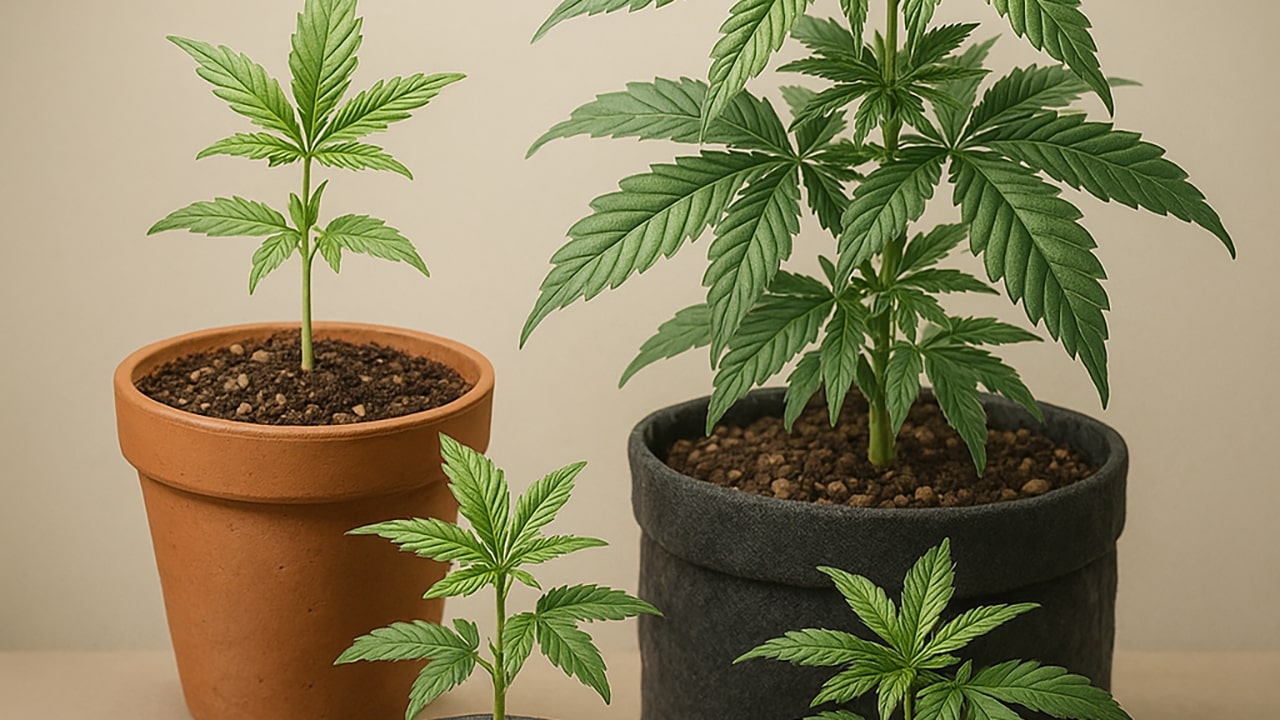
Caring for cannabis in a pot: from germination to flowering
After preparing the equipment and planting the seeds, the most important stage begins—daily care of the cannabis. It is at this stage that the health of the bush and its future yield are formed. It is especially important to follow the rules if the grower has chosen indoor cannabis growing, i.e., in a closed room.
Germinating cannabis seeds
The classic method is usually used to start:
- Place the seeds between damp cotton pads or napkins.
- Leave in a warm, dark place (22–25°C).
- After 2–3 days, roots will appear — it's time to transplant into a pot.
Proper watering of hemp
Watering is essential for plant life, but it is important not to overdo it:
- Water only when the top layer of soil becomes dry.
- Use water with a pH neutral to cannabis soil (around 6.2–6.5).
- Add oxygenated water once a week to improve root respiration.
Fertilizers for marijuana
Nutrients are essential for growth and bud formation..
- During the vegetation phase, marijuana plants need nitrogen.
- During the flowering phase, they need phosphorus and potassium.
- Organic fertilizers or proven mineral complexes are used for growing marijuana.
Lighting control
For cannabis grown in pots, especially indoors, light plays a key role..
- During vegetation: 18 hours of light / 6 hours of darkness.
- During flowering: 12/12.
- Make sure that the lamps used for cannabis do not overheat the leaves and evenly illuminate the entire bush.
Ventilation and humidity control
- Install an exhaust and supply fan in the grow box.
- Optimal humidity: 60–70% during vegetation, 45–55% during flowering.
- Ensure light air movement around the plant to strengthen the stem.
By following these steps, the grower will obtain a healthy and robust plant that is ready for the flowering phase. Growing cannabis indoors requires discipline and attention to detail, but it allows for control over every aspect and the creation of ideal conditions for growth.
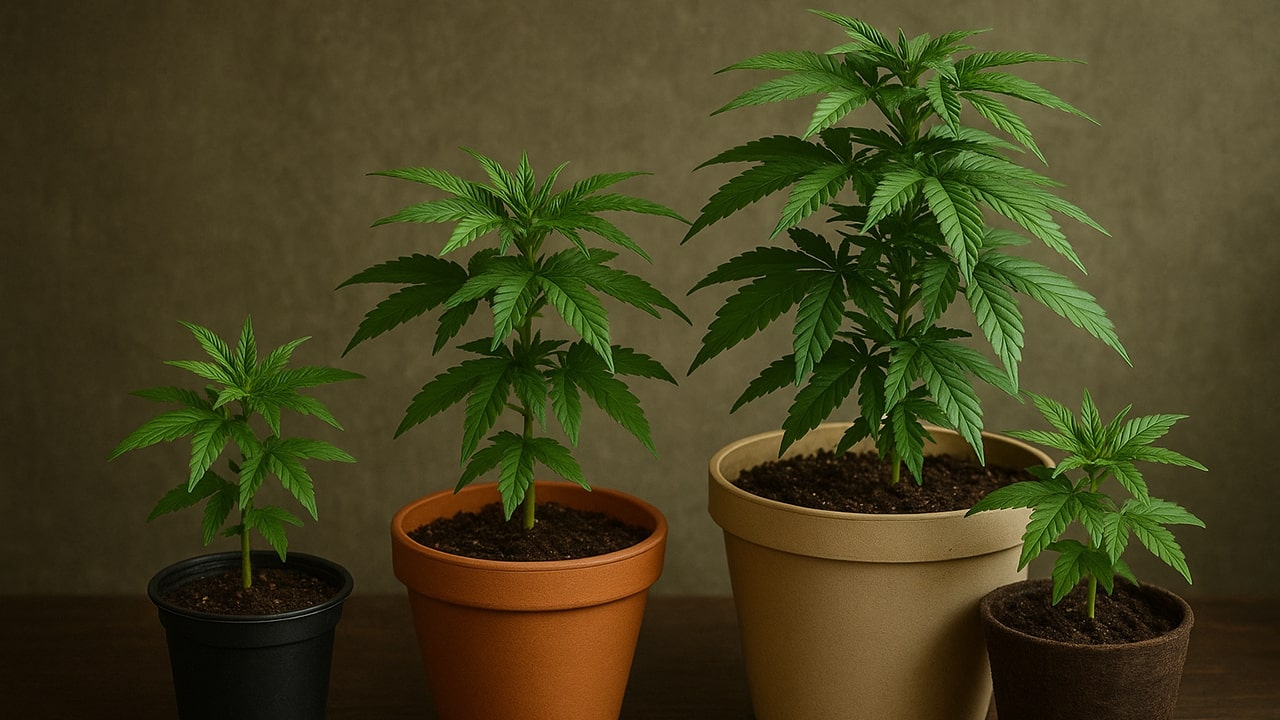
Pot size and final stages: flowering and harvesting
In the final stages of the plant's life cycle — the flowering and harvesting phases — it is important that the root system has enough space to develop fully. The health of the plant, the size of the buds, and the overall quality of the harvest directly depend on the size of the pot. When growing cannabis in a pot, choosing the right size is not just a matter of convenience, but a strategically important decision.
Below is a table showing the sizes of pots for different types of cannabis (indica, sativa) and stages of development:
| Growth stage | Plant type | Pot volume | Comment |
| Germination | Any | 0,5–1 L | For the first 1–2 weeks, it is convenient to transplant |
| Vegetation (2–4 weeks) | Indica | 5–7 L | Compact shrub, slow growth |
| Vegetation (2–4 weeks) | Sativa | 7–10 L | Fast-growing shrub, larger size |
| Flowering | Indica | 10–12 L | That's enough for the final stage |
| Flowering | Sativa | 15–20 L | For tall and vigorous bushes |
| Autoflowering varieties | Any | 7–10 L | It is better to plant it directly into the final pot |
If a grower chooses Well-Pot pots, they should pay attention to models with reinforced wall ventilation—this helps prevent root rot and improves nutrient absorption during the flowering phase. These pots are particularly well suited for indoor cannabis growing, where it is important to control every parameter.
Towards the end of flowering, the bush begins to give back everything it has accumulated during the cycle. During this period, reduce marijuana fertilizers, monitor lighting for cannabis, and reduce watering to stimulate resin accumulation. With the right approach, growing marijuana at home yields dense, fragrant buds with a high THC content and a rich flavor.
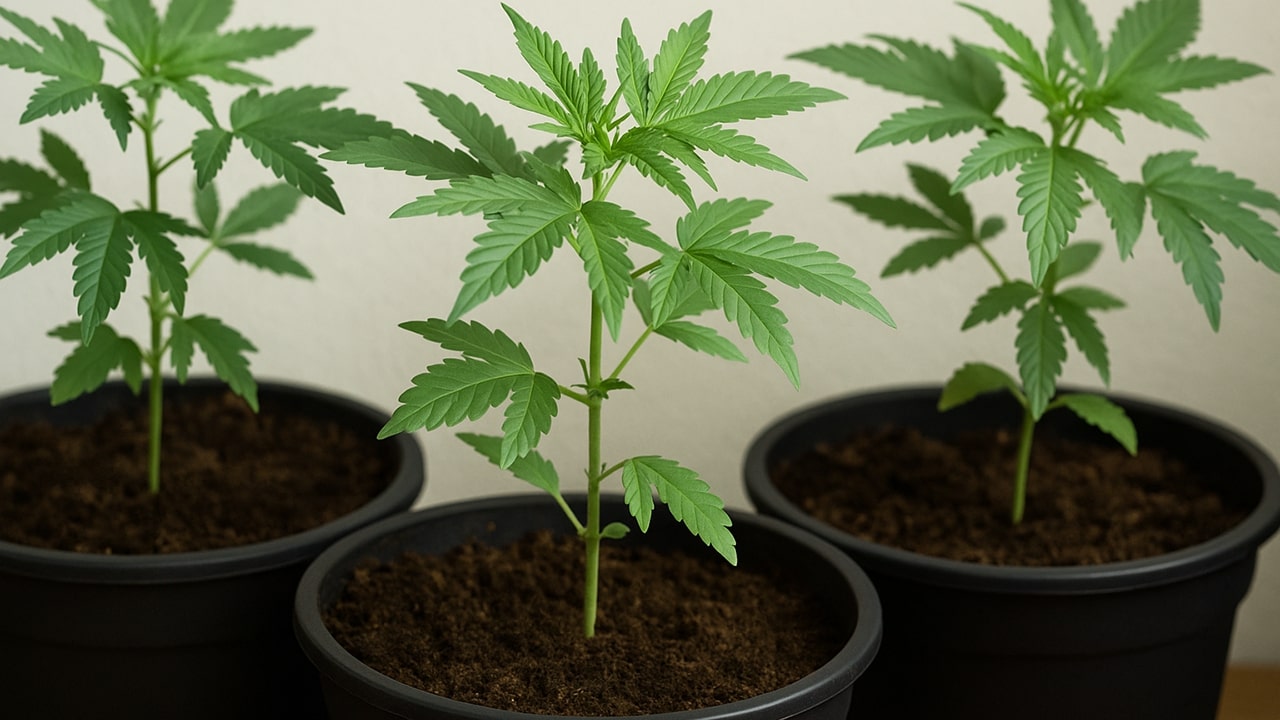
Attention! Errors Seeds does not encourage you to grow cannabis and does not promote it in any way. Cultivation is prohibited by the legislation of Ukraine. The article is of scientific and introductory interest only.
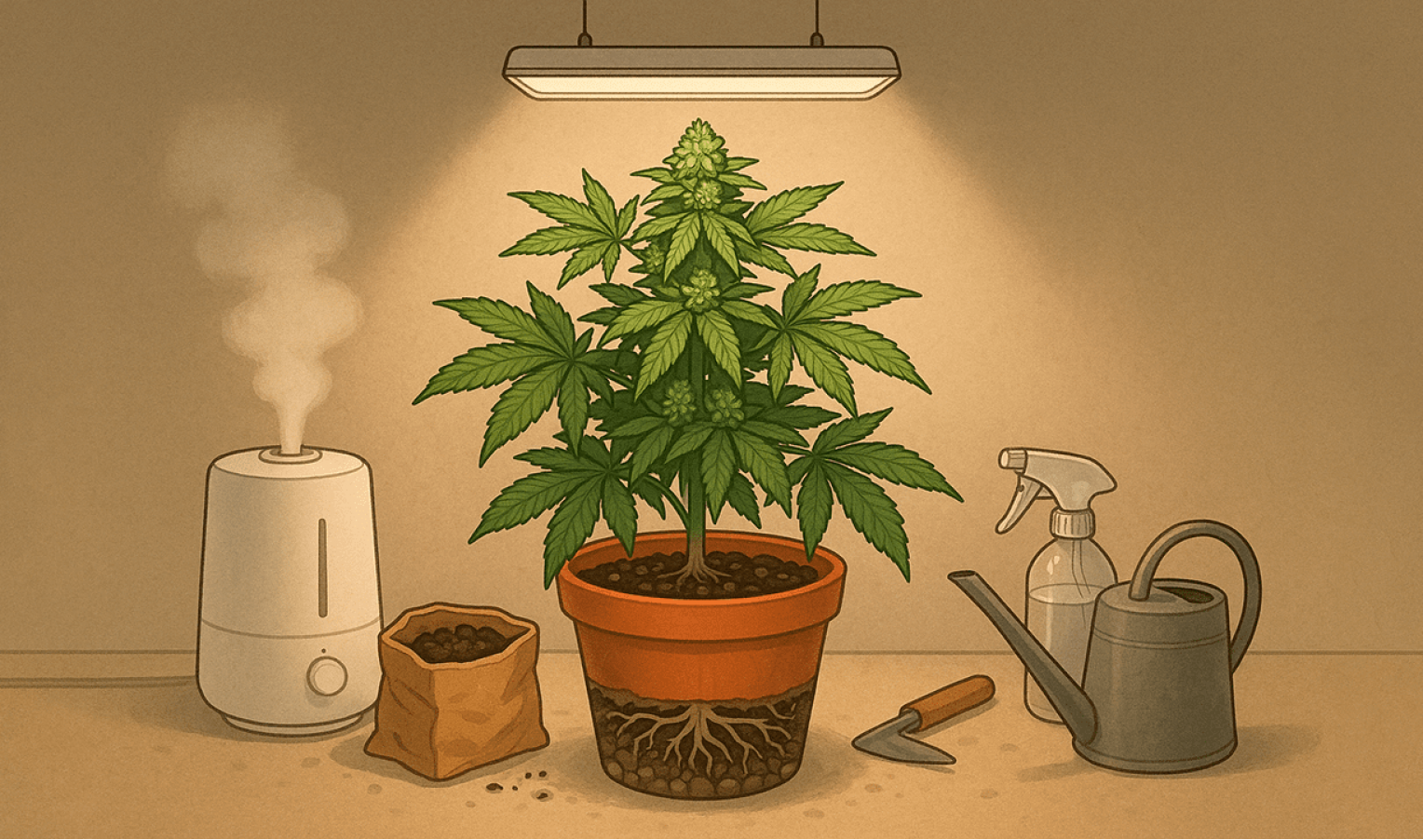
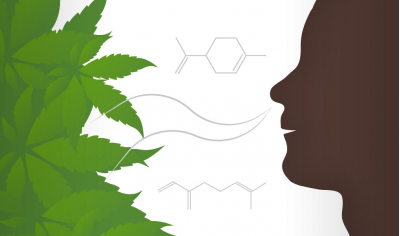
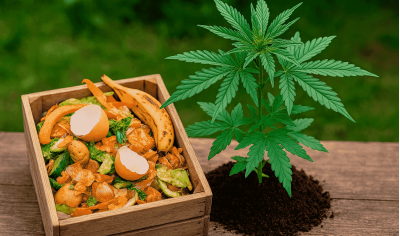
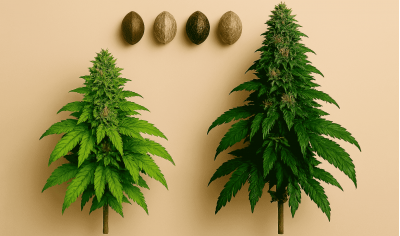
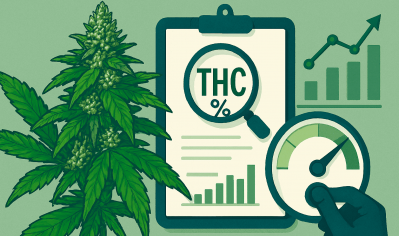
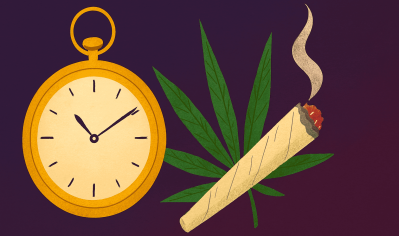


Write a comment